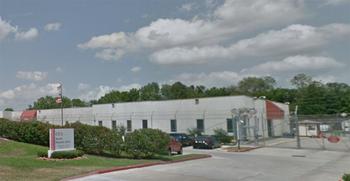For background on the U.S. Immigration and Customs Enforcement detention inspection system, read the full October 2015 report by the National Immigrant Justice Center and Detention Watch Network: Lives in Peril: How Ineffective Inspections Make ICE Complicit in Detention Center Abuse.
Facility Profile
|
Detention Standards (as of 2012): |
2008 PBNDS (Performance-Based National Detention Standards) |
|
Facility Type: |
CDF (Contract Detention Facilities) |
|
Private Contractor: |
CCA (Corrections Corporation of America) |
|
2012 ICE Average Daily Population: |
832.6 |
|
2011 ERO |
2011 ODO |
2012 ERO |
|||
|
Private Contract Inspector: |
MGT |
Private Contract |
None |
Private Contract |
Nakamoto |
|
Rating: |
Meets Standards |
Rating: |
N/A |
Rating: |
Meets Standards |
|
Deficient |
0 |
Deficient |
0 |
Deficient |
0 |
|
Deficient |
6 |
Deficient |
1 |
Deficient |
4 |
In 1984, the Houston Processing Center (HPC), located in Houston, Texas, became the first private prison ever built in the United States. It is owned and operated by Corrections Corporation of America (CCA), the nation’s largest private prison company. A 2012 Detention Watch Network Expose & Close (E&C) report highlighted HPC as one of the worst immigration detention facilities, but its 2011 and 2012 ERO audits and 2011 ODO audit reveal few deficiencies and paint a picture of a facility that seems to be in compliance with standards.
Health Care and Solitary Confinement
 |
© 2015 Google |
For example, detained immigrants interviewed for DWN’s E&C report described long delays in accessing medical care and the inappropriate use of solitary confinement1 for individuals with mental health issues. Two people died at the facility in 2011—including a 31-year-old man who died at a local hospital after only six days in detention, three of which he had spent vomiting.2 None of the inspections noted deficiencies or concerns within the Medical Care standard. The ERO inspectors explicitly mention reviewing medical records but they did not interview detained individuals about their experiences or follow up on any complaints or grievances. For example, one mandatory component under the special management unit (SMU) standard requires health care personnel to provide assessments and reviews for every detained individual placed in the SMU (also known as segregation or solitary confinement). The ERO inspectors reviewed medical records but failed to interview detained individuals. If they had, they might have heard about David Jameson, whose story a friend conveyed to DWN in July 2012. At that point, Mr. Jameson had been in solitary confinement at HPC for nine months, despite being diagnosed with schizophrenia and prone to panic attacks. In Mr. Jameson’s case, either HPC failed to fully document his circumstances or the 2012 inspectors ignored basic health care standards; either explanation is alarming. By the time of DWN’s visit, Mr. Jameson’s psychological problems had caused him to refuse to bathe for nearly four months.3
Food and Grievances
The rather stark contrasts between DWN’s E&C report and the audits continue with 2012 ERO inspectors describing the food as “nutritious and attractively presented meals”4 and that the “facility menu has been certified by a registered dietician, and has been analyzed with a daily average calorie count of 3100 calories.”5 Individuals interviewed for the DWN report described the food as “insufficient to maintain one’s health” and unappetizing.6 The E&C report goes on to describe a toxic environment where people had given up on filing complaints because they never received responses or because they feared retaliation, and in which guards verbally abused and threatened individuals with solitary confinement if they complained.7
Telephone Access
The impact of designating some components as “non-mandatory” also is evident at HPC, where the requirement to afford detained people “a reasonable degree of privacy for legal calls” is met by taking them to “the shift commanders’ or unit managers’ office to place legal calls,”8 This arrangement seems to assume that the requirement for privacy is only meant to protect conversations from being overheard by other detained people, rather than by facility staff, and even that protection is easily overridden. Even these phone calls can be monitored as long as “notification is posted by detainee telephones.”9 Although the standard is “met,” any real hope for attorney-client confidentiality is eliminated.
Endnotes
1. See Christy Carnegie Fujio & Mike Corradini, Buried Alive: Solitary Confinement in the U.S. Detention System, Physicians for Human Rights, Apr. 2013; National Immigrant Justice Center & Physicians for Human Rights, Invisible in Isolation: The Use of Segregation and Solitary Confinement in Immigration Detention, Sept. 2012; United Nations, Interim Report of the Special Rapporteur of the Human Rights Council on Torture and Other Cruel, Inhuman, or Degrading Treatment or Punishment, Aug. 5, 2011.
2. Expose & Close: Houston Processing Center, Texas, at 6.
3. Expose & Close: Houston Processing Center, Texas, at 4.
4. 2012 Houston CDF ERO Inspection, at 73.
5. 2012 Houston CDF ERO Inspection, at 69.
6. Expose & Close: Houston Processing Center, Texas, at 4.
7. Expose & Close: Houston Processing Center, Texas, at 5.


